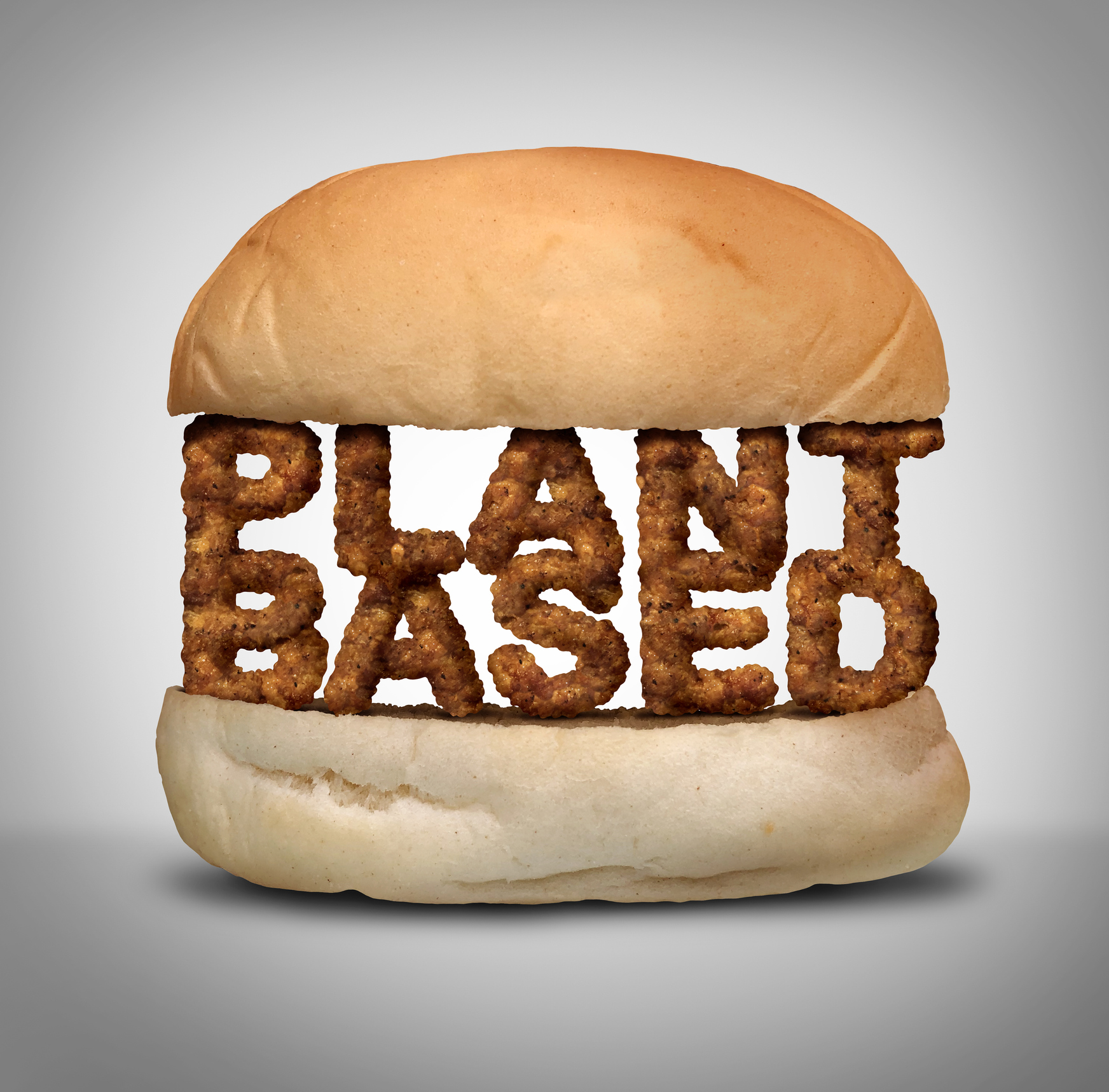
You may be seeing your share of plant-based burgers, such as Impossible Burger and Beyond Meat, at barbecues and gatherings this summer, and you’ll also find them on the menus at many restaurants.
But what is the beef on plant-based beef?
If you love the taste of a juicy burger but want to limit your intake of animal products, “burgers” and “ground beef” products such as Impossible Burger and Beyond Burger are both vegan, gluten-free and use plant-based protein, usually from peas, beans, lentils or soy; they also contain small amounts of fiber, as well as nutrients such as iron and vitamin B12 that vegan and vegetarian diets often lack.
The Impossible Burger uses heme, soy and potato protein and contains more iron than a beef burger and 6 grams of Net Carbs (without a bun). Heme is an essential molecule naturally found in plant and animals that causes the Impossible Burger to “bleed” like real meat when it’s cooked.
The Beyond Burger uses pea protein isolate, a powder made by extracting protein from yellow peas and contains 2 grams of Net Carbs (without a bun). By comparison, a burger made from beef contains no carbs.
These two burgers cook, smell and taste like real meat. Some people say if they had not been told that what they were eating wasn’t a “real” burger, they might have never guessed.1
But should these “burgers” totally replace your occasional beef burger?
The truth is that that despite their popularity, these plant-based meats are highly processed and feature novel ingredients. In fact, the Center for Food Safety filed a lawsuit against the FDA challenging their decision to approve ingredients found in the Impossible Burger.
While cutting back a little on meat does give the environment a boost—swapping three meat-based meals for three plant-based meals a week can save about 225 square feet of land, 12 gallons of water and 54 miles of car emissions—you’re not doing much for your health if you’re eating a plant-based burger loaded with “special sauce”, sandwiched in a white-bread bun, and accompanied by a side of fries.
Do you want to cut back a little on your meat intake? The occasional plant-based burger is certainly acceptable (just hold the fries and white flour bun), but keep your main focus on nutrient-rich whole foods, like these low carb plant-based meals. If you’re motivated to make more sustainable food choices for the environment, check out my 8 sustainable food tips for your low carb lifestyle.
1Excerpted from The Atkins 100 Eating Solution, by Colette Heimowitz (Atria, 2020)